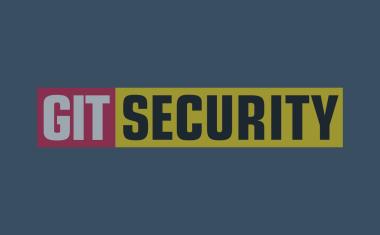Video Security for Retail: Three Questions for Five Experts
In this series, GIT SECURITY EMEA asks three questions to five industry experts about the issue's special focus. This time we asked five experts for their view on video analytics for retail.

1. What products do you recommend for retail security?
2. What benefits can users get through video sensors beyond security?
3. Please describe a success case where you implemented your system in a retail solution?
Graham Swallow, Retail Lead for Axis Communications EMEA
1. Axis have end 2 end solutions for Retail security. Devices that are open technology and designed with quality image, Cyber security, and sustainability in mind are vital.
Axis VMS with one time license and redaction built in reduces cost, Cameras from PTZ to fixed with edge processing capability. Smart camera tracking with Radar or IR for perimeter. IP Audio speakers directly interacting with camera analytic improves deterrent impact. Switching from analogue to IP with Axis encoders is a scalable conversion for both CCTV and audio.
Our access control is open and SMART, body worn camera is built to service the demands of a tough day in Retail security. We also have an echo system of partners that provide analytics bringing safety and security features to life.
2. Capturing images and driving actionable alerts to reduce burglary, theft and violence brings value but it doesn’t need to end there. Video analytics on the camera edge can be used to create actionable alerts to drive a retail operation (identify loitering customer in a high-risk area to initiate service to deter or drive a sale) and provide data for long term planning (Busy times require more staff and available baskets). The same analytics improve the customer experience, drive sales but also impact on the safety of customers and staff.
3. An online retailer had an imbalance in reported customer shortages at the point of delivery and evidence to understand the difference between theft, lost or poor operational practice. Axis camera and our echo partner capture the order packing and shipping process by order number and add a packet of video of the process to store the product journey. When a customer complains that a product is missing from the delivered package or not delivered the service team sitting miles away from the DC can access the stored information. This simple desk top review allows a customer centric decision. The complaint is sent to the correct department to repick, investigate a potential fraud or call on the currier service level agreement to compensate for failed delivery. Driving customer confidence and reducing unknown losses.
Evgenia Ostrovskaya, Business Development Director at Genetec
1. At Genetec, we tend not to bring our range of products to the customers but instead understand their operations and see how we can create the business case for the retailer. Since its early introduction into the retail environment, video systems have presented a challenge in showing a clearly identifiable Return on Investment, particularly relating to the tangible components of retail loss. For instance, installing CCTV has rarely translated into a measurable and sustainable reduction in shrinkage. But, in many cases, its role has often been seen as delivering much more intangible benefits that are less easy to capture in a businesses’ P&L, such as staff and customer safety and protecting organisational reputation. Video systems are often a form of ‘insurance policy’ – retailers showing due diligence when things go wrong in their spheres of influence and responsibility.
2. We have seen the situations when retailers have cameras for marketing and operational purposes installed next to security cameras. This is an unfortunate underutilization of the security system and can lead to potential loss of the budget, leading to investments elsewhere. The Security Center platform can help you tap into this data to present actionable business intelligence. These insights can enhance decision-making across your entire organisation, not just security.
In the pandemic, one of the popular examples is occupancy management. As you prepare to reopen your business, you’ll need to keep your customers and employees safe by adjusting your security measures to adhere to physical distancing regulations. A top priority will be defining occupancy guidelines and mobilising your operations to limit the risk of COVID-19 transmission.
These guidelines can vary from a maximum threshold to the number of people per square foot. To enforce this, you’ll need to know how many people are on your premises at any given moment– then continuously monitor the data and take action when thresholds are met.
Our new Occupancy Management Package will enable customers to operate within the guidelines for occupancy density. This solution can count the number of people in your store or equivalent public-facing business, visualise the data and send alerts to employees when occupancy limits are being reached. Reports can also be produced to demonstrate your compliance with local measures. Another example is using existing cameras for heatmaps to capture your customers’ navigational and interactional behaviour. Designed as a decision aid, heat maps help you gauge promotion and display interaction and help key decision-makers improve store layout and product placement.
3. Unibail-Rodamco-Westfield (URW) owns and operates two of Europe’s largest shopping centres; Westfield London and Westfield Stratford City. The two landmark retail and leisure destinations annually attract over 73 million shoppers and generate £2.1bn in retail sales. To keep shoppers safe, the security team uses Genetec Security Center. As described in detail in the article in this issue of GIT SECURITY, the unified platform helps the team better understand and respond to everything happening in their widespread environment.
Uri Guterman, Head of Product & Marketing at Hanwha Techwin Europe
1. Perhaps the biggest development in video technology in recent years has been the wider deployment of AI ‘at the edge’ – to not only deliver better image quality, but provide users with greater insight into the images captured. So, while retail security systems may have grown in complexity in recent years, retailers need to understand that the massive processing power of the latest generation of high definition cameras means they are able to offer so much more than traditional security cameras.
Indeed, the wider availability of affordable, easy to configure and discreet cameras equipped with video analytics software has opened up a massive opportunity for retailers to gather reliable and verifiable data that can help them assess why an individual store is performing better than others, for example, or better understand the behaviour and intentions of customers.
2. Retailers want maximum benefit from their investment in a video system. So while loss prevention managers want to deter and detect criminal activity, operations, marketing and merchandising colleagues want video to help them identify business efficiencies.
Yet by harnessing AI, applications such as people counting, heat mapping, queue management and demographics are available on camera, ready to work ‘out-of-the-box’, but configurable to meet specific customer requirements.
The benefits to retailers include making better use of staffing levels, managing the peaks and troughs of customer flow at checkouts, as well as measuring the impact of advertising and online promotions on the number of people who enter their stores.
3. Hanwha Techwin’s video solutions help many of Europe’s best-known high-street retailers, supermarkets and fast-food restaurants prevent loss and unearth new and valuable insights into the way their operations run.
Typical applications for these users include using video to better understand who is coming into their store by confirming details such as age and gender, and highlight hotspots on the shop floor – helping them identify any bottlenecks that might disrupt the customer experience Video can also be used to assess customer interest in a particular area of a store, even a range of specific products on a shelf, by capturing the amount of time customers spend at a certain point, and the degree to which they interact with a product. By comparing this data to sales figures, retailers can identify any room for improvement in terms of product display, point of sale or even pricing.
Finally, many retailers also rely on Hanwha Techwin’s public view monitors which feature an integrated camera to actively deter crime, while providing business data and intelligence. A default blinking ‘Recording in progress’ message is superimposed over the displayed graphics to let would-be thieves know they are on camera, with operators having the option to customise the message to feature promotions or advertising messages.
Iris Huo, Retail Solution Manager at Hikvision
1. The security solutions for retail industry vary from one another, there are many factors impacting the video cameras used by retailers. But still, there are something in common for what are needed, for example, loss prevention, improved operational efficiency, better customer experience, etc. For retail security, it usually comes to the security during off-hours, the security of goods on the shelf and in the warehouse, the security of a transaction, and many others. Critical positions like the checkout areas, we recommend to install HD cameras, in case any transaction dispute happens, so quality videos can be retrieved for evidence review. It is also important to secure the premise during off-hours, so intrusion detection system becomes crucial here. Hikvision offers a range of intrusion systems including video cameras for securing a property. Our DeepinView camera range offers edge-based intelligence that can distinguish humans from other objects, and warn off the intruders with its visual and auditory warning. The cameras can protect the facility 24/7, thanks to the Hikvision’s signature ColorVu technology which ensures images are vivid and in color even at night.
Next, it’s about warehouse protection. It usually combines perimeter protection with fire protection. We recommend thermal cameras to cover them both. With advanced algorithms, our thermal cameras accurately detect abnormal temperature changes and intruders. For some large retailers, there are also office areas that can be only accessed by staff. Access control with our MinMoe terminals provide touch-free access using facial recognition, so only authorized staff are allowed to enter.
2. Besides security as a fundamental offering, today’s video sensors can further generate more insights for business. In retail industry, specialty stores and supermarkets care more about how customers move through the floor, their shopping patterns and customer’s shopping experience. Hence, business intelligence (BI) cameras are a good choice. One aspect is Area Density Monitoring. Retailers can adopt fisheye cameras for both area heat map and global heat map. In the shelf area, heat-mapping technology marks the popularity of each shelf areas. For the entire store, using ceiling installation of several fisheye cameras helps generate global heat map, so store managers can see where the hot areas are and to enable better product allocation for promotion. Likewise, queue detection cameras can be used to monitor queues in real-time and send notifications when there are too many people waiting in line.
Another great advantage is remote inspection using existing CCTV systems to look at the cleanness inside the store, the staff service, and operations, whether these are well conducted as required. This is usually done offline before the pandemic, with audit managers travelling to each store for inspection and reporting. Now it can be processed online – vastly improving efficiency and standardization.
3. Polish reseller Volta used Hikvision’s AI products including people counting cameras, fisheye cameras, NVRs and Hikvision’s centralised software platform to help Miniso Poland (a retail brand) streamline its marketing strategy, and identify trends throughout the network of stores. With this tailor-made solution, management could calculate how many people were passing by to see a purchasing conversion rate. Using ceiling installation of several fisheye cameras, the system can generate heat maps. This helps managers to see where ‘hot areas’ are, helping them to allocate products in the optimal place for promotion. Hot areas can also be compared with sales figures to provide further insights into shopping patterns. This is a great example of how AI security products can change the landscape of business decision-making.
Mathias Glock, Manager Regional Sales i-PRO EMEA
1. The products that I would recommend in retail are the ones that are both, reliable and discrete. Customers should not even notice the cameras during their shopping experience. On top of that, retailers need video surveillance products that are able to resist vandalism and produce high quality images for clear proof in case of incidents or damages. In addition, the usage of AI capable cameras can give an extra benefit for the retail market. Thanks to this new and innovative technology, cameras are not only used for capturing security footage, but also for statistics and additional data analysis generating business insights, for example for marketing purposes.
2. The benefits of AI-capable CCTV cameras are mainly based on the opportunity to analyse and use data, as a sensor that can (pro-)actively notify for different approaches. You can evaluate the usage of different locations inside the store and the type of customers which are coming into your shops, providing key information thanks to different applications they can run for data analysis: people counting, people behaviour, “non-wearing mask” detection for COVID surroundings, occupancy detection, lost object detection and many more. Thanks to AI, you can even analyse the mood of the customers and their reactions whilst strolling through the store. Beyond that, the camera is also useable as a “facility management sensor” linking into heating, lighting and also stock management. In addition, it can be combined with plenty of third parties applications for access control or also easy and self-payment solutions.
3. One of the success cases we have implemented in 2021 is with a retailer in Switzerland. It’s a test shop without any employees, which is open 24/7. Inside that shop, everybody can enter with an app and buy some groceries. The cameras with AI capabilities analyse what customers have inside their shopping bags, what they are taking from the shelves and in the end, in front of the barrier, the system summarises the contents inside your bag, so you can pay and then leave the shop. Thanks to these analytics, the retailer can get the information about the products availabilities, so they can manage the product supply. For the company, it has a very important cost saving impact such as employment cost, extended opening hours and stock saving management – as they only restock the products when the product availability is decreasing.















